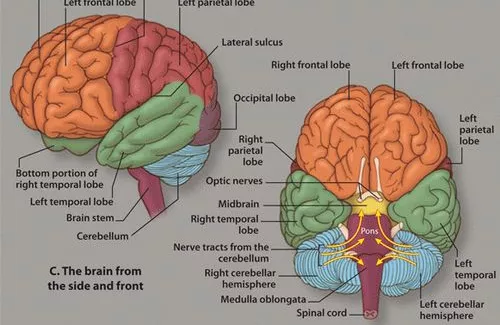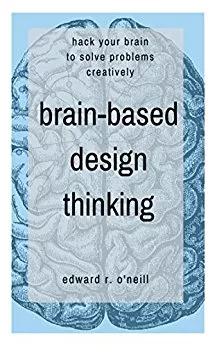
On January 13, 2017, Edward O’Neill facilitated a workshop at Bryn Mawr College on Brain-Based Design Thinking. Based in cognitive psychology and behavioral economics, O’Neill uses the physiology of the brain and human behavior to explain why creative problem solving can be difficult and offers an approach that combines listening, information visualization, ideation, and iterative project planning to achieve collaborative solutions.
O’Neill sees the obstacles in solving problems creatively as intrinsic to the brain. The brain is detail-oriented, verbal and conceptual, analytical and rational, and more inclined to pattern recognition. These characteristics create a natural tendency to overthink. However, by tapping into our emotions and using visual methods, which the brain processes faster, we can find solutions that are more global and creative. Traditional design thinking involves five steps: interviewing with empathy and observation, defining the problem, visualizing the problem, ideation, and prototyping, and the key questions become: what do we need or need to learn, how is the information structured, how can the information be seen or interacted with, and what are the creative solutions.
Many problems are difficult to solve, according to O’Neill, because the “problem-picture” is missing, inaccurate, incomplete, or an obstacle, so we do not understand the real nature of the situation, and incorrect assumptions mislead or distract us. Therefore, problem solving is a process of redefining and reframing the problem, with two phases in which we first diverge in multiple directions and remove all constraints, and then we converge into a single path. In that way, we can move from our current problematic state to our ideal goal state, having considered a variety of actions and resources. When we use these steps to create a problem-picture that is solvable, we are ready to achieve our goal.
Ultimately, for O’Neill, an issue becomes a problem precisely because we do not comprehend the situation accurately or completely, so we cannot envision getting from our current state to the goal state. The solution involves restating and refining the problem using an iterative process, in which the goal state is defined, information is collected, analyzed, and interpreted, and a solution is “ideated” through brainstorming or the use of analogies for the reframed problem.
